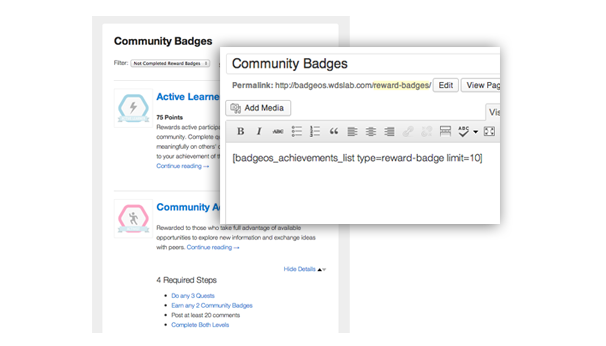Growing a membership website is hard work. Fortunately, growing a membership website in WordPress makes things a heck of a lot easier. From deciding which membership levels to use to determining pricing structures and additional features to add, every move you make has a direct impact on how well your business grows.
We’re going to focus on a few specific tips you can use to grow your membership website using WordPress. Because we’re focusing on WordPress in this article, we’ll be mentioning a handful of membership plugins you can use. Check out a similar article we published on this topic if you’d like a more complete list of some of the best membership plugins you can use for WordPress.
 Exclusive WPEngine Coupon Code for AlienWP Visitors!
Exclusive WPEngine Coupon Code for AlienWP Visitors!Get 5 Months Free & 30% Off All Plans.
Click the coupon code to copy and open the link »
Choose a Membership Type That Suits Your Audience
There are a number of different types of membership sites you can design your business around. Here are a few popular ones:
- Online School/Courses
- Online Publication
- Video Site
- Product
- Service
- Online Community
When you build a membership site, you’re not building something that will make you money. Not entirely, at least. You’re building something that solves a problem for a particular niche. When you solve a problem and provide great service while doing so, you won’t have to worry about growing your membership website as much. That’s why we’re starting this article off by talking about types of memberships, models you can use, pricing structures and similar topics.
What you need to do is define a specific problem you want to solve in your niche, even if you’re membership site is already up and running. Once you determine what problem you want to tackle, you can start brainstorming various ways to solve it and decide which membership type is best suited for your solution(s).
Integrate Additional Membership Types
That being said, you don’t need to stick to one membership type forever. In fact, you shouldn’t. You’ll come across many different types of individuals who learn and use products in different ways as your business grows. If you begin seeing a trend in students wanting features that resemble other membership types, add them as needed.
An example of this would be a membership site that starts off as an online school but adds a forum students can use to discuss coursework later on. Both of these features are powerful enough to run their own separate membership sites, but they’ll enhance your business if you combine them.
Choose a Delivery Model That Helps Members Achieve Their Goals
There are three main delivery models you can use to distribute content to your members. They are:
- Drip
- All Access
- Pay Per Product
Different types of membership types require or work best with different types of delivery models. Furthermore, different types of customers prefer different types of delivery models. The one you choose will determine whether or not people subscribe as well as whether or not they stay subscribed. Unfortunately, there isn’t a clear-cut method that simply works. It all depends on your audience.
Here’s a simple explanation of all of these models using an online school as an example:
- Drip – Lessons are delivered to the student in set intervals. For example, if you want the student to read/watch a lesson and implement whatever that lesson taught before they move on, you can wait 7 days before you send the next one. This gives them 7 days to complete everything before moving on. It can also motivate student to get through the course as some may become overwhelmed when they’re faced with a big course load.
- Membership plugins that offer a drip feature include MemberPress, Paid Memberships Pro, Memberium and MemberMouse.
- All Access – This is the exact opposite of a drip model. You give the student access to the entire course (or every course in the school) when you use this model. While it may seem overwhelming for some, it can make your subscription seem more valuable to others when they see how much you have to offer for a certain price.
- Pay Per Product – Most subscription sites offer a wide range of features for a fixed price, but what if your audience doesn’t want all of those features? This is where the pay-per-product model is useful. Instead of requiring them to pay multiple features, you can offer them a sense of freedom by allowing them to pay only for what they need.
Some membership sites use two or even all three of these delivery models. Netflix, for example, gives you access to everything in its library when you subscribe, but it also “drips out” content in the form of original programming every now and then. You’ll need to figure out which delivery type(s) would work best for your audience so you can encourage them to join and keep their subscriptions active.
Be Meticulous with Pricing
Pricing for membership sites is interesting as different pricing tiers and membership levels allow you to offer your product or service to a wide range of individuals and businesses. It’s best to start off with a single, flat-rate pricing structure that’s easy to manage. As your business grows, you’ll notice some customers requesting more or less features, allowing you to add more tiers to your pricing structure.
When you approach pricing, your figures and the features you add to each tier should suit whoever you want to target. If your business targets other businesses, place your prices higher and be prepared to offer premium features designed for professionals.
If your business targets individuals, you’ll likely need to lower your figures to a number that’s closer to what they’re willing to pay. Just make sure you don’t lower them too much as you won’t be able to sustain yourself, which can have a negative impact on the quality of your service.
Giving Your Customers Control Over Their Subscriptions
Some membership sites do better when they give their customers more control over how much they pay for their subscriptions. This doesn’t mean you should use a “pay what you want” structure as it likely won’t create a sustainable business model. It also prevents you from offering high commissions to affiliates.
This means you should allow customers to choose from monthly, periodical (every 3 months) or annual subscriptions. You should also offer discounts to customers who are willing to pay more upfront.
Bring in More Revenue with Tiers
Some businesses try to get away with raising prices by offering more features to their single-tier membership services. The result is a large number of customers cancelling their subscriptions out of anger and finding service elsewhere.
A wonderful compromise to this dilemma would be to add a new, higher-priced tier that includes the new features you want to add to your business. You can even encourage current subscribers to upgrade by offering exclusive locked-in rates at discounted prices.
Offer Premium Content & Restrict Access
Online publications, schools and similar businesses can encourage their audiences to subscribe to their sites by offering premium content and restricting access to members.
Maybe you already have a blog you publish to frequently as well as a podcast and a YouTube channel. You can create more premium content, such as interviews, longer podcasts and higher-quality videos, and use plugins like MemberPress, Paid Memberships Pro, Memberium and MemberMouse to restrict access to them.
Offer an Ad-Free Experience to Members
This is another way online publications can increase their subscription rates. If your site is powered by ads and sponsorships, offer an ad-free experience to paying members to encourage them to subscribe. Paid Memberships Pro has a feature that allows you to do this.
Add a Members-Only Forum
Rallying your audience and turning them into a community is a great way to grow any website let alone a membership site. An online community may be a specific type of membership site, but you can just as easily use a forum as an incentive to subscribe. Plugins like MemberPress, Paid Memberships Pro and Memberium integrate with bbPress, and MemberPress also integrates with Simple:Press.
Reward Achievements to Engage Members

Membership sites like online schools and communities can reward achievements to members when they engage and interact with the site. You can use a plugin like BadgeOS to add achievements to your site. Memberium offers an integration for this plugin.
Offer Quality Support
This should be a given, but we’ll mention it, anyway. Poor support and communication with customers can have a negative effect on your business’ reputation. Combat this by prioritizing your current customers’ happiness over new ones.
Collect Feedback from Members
This is a great use of your forum, and a wonderful way to grow your membership site. You can’t always guess what your members need, and you can’t always tell them what they want, either. Collecting feedback on features they like, features they hate, features they want and problems they’re having can help guide you to your next move. You can also use surveys or your email list to collect feedback.
Offer an Affiliate Program
Once you have a fully-fledged suite of features to offer members and offer them killer support and service along the way, you can start encouraging them to recommend your site to their friends and followers with affiliate links. There are a few membership plugins that offer integrations with affiliate plugins, including:
- MemberPress: Affiliate Royale
- Paid Memberships Pro: AffiliateWP
- MemberMouse: iDevAffiliate, AffiliateWP, Post Affiliate Pro and WP Affiliate Plugin
Up Your Marketing Game
You can use marketing techniques you’d use for a regular site to market your membership website to acquire new leads or even members. These techniques include content marketing, such as blogging, search engine marketing, email marketing, social media marketing and advertising.
Speaking of search engine marketing, Paid Memberships Pro has a feature you can use to show excerpts from restricted content to non-members. This allows search engines to crawl parts of the content you’ve restricted access to.
Final Thoughts
All in all, growing a membership site isn’t necessarily about which image you use in your Facebook Ads or what you publish in your blog. It’s mainly about optimizing every little piece in the products, services, features and support you offer. When you do this, you’ll find more people who are willing to subscribe to your website and keep their subscriptions active.
Once you’ve optimized all of that, you can move onto affiliate programs and digital marketing.

